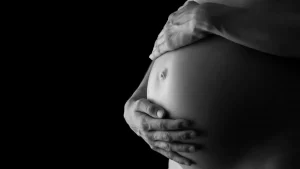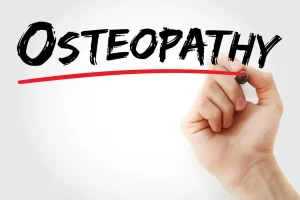Osteopathy is a medical philosophy that uses manual techniques to find and heal the causes of fatigue and pain by focusing on the entire body, including the organs as well as muscles and bones. It is characterised by its focus on the natural healing power inherent in human beings and its ability to lead to health. Osteopathy is such a method, but in recent years, more and more pregnant women are being treated during pregnancy to improve their physical condition and relieve anxiety leading up to delivery. On the other hand, many people feel uneasy about undergoing such treatment during pregnancy. This article therefore provides some knowledge for pregnant women who want to undergo osteopathic treatment during pregnancy.
History of osteopathy

Osteopathy was proposed by Andrew Taylor Steele, a physician in the USA, and was handed down in Japan around the Taisho period.
He is known as the father of osteopathic treatment and has contributed to the health of people all over the world.
While conventional osteopathy relieves fatigue and pain by correcting distortions in the bones and muscles, osteopathy is characterised by taking into account a wide range of areas such as arteries, veins, lymph and cranial nerves in its treatment.
Osteopathy represents a medical philosophy rather than a method of treatment, and is said to consider the whole body as a unit, with the body’s functions and structures as an integral part, and to focus on inspiring the body’s natural healing abilities.
The National Centre for Complementary and Integrative Health in the USA defines alternative medicine as massage therapy, etc., and an important factor behind this is the introduction of the concept of osteopathy.
Shiatsu and osteopathy began to spread in Japan around the Taisho period (1912-1926), and it is said that osteopathy had a major influence there as well.
The osteopathic concept complements elements that could not be followed up with the previous medical concept alone, and is used to help people to stay healthy and well.
Safe treatment methods during pregnancy

”Many pregnant women who have considered having osteopathic treatment for various symptoms and tiredness associated with pregnancy are concerned because they think their bodies will be stimulated in some way,
but not only does osteopathy itself provide soft treatment, but it also offers a maternity However, not only is osteopathy itself a soft treatment,
but clinics and salons that offer osteopathy for pregnant women can offer services that are even more considerate of pregnant women, so they can receive the treatment with peace of mind.
Osteopaths who perform the treatment have a wealth of knowledge about the human body and are familiar with how strong and how delicate joints and muscles are, so they never push or twist forcibly.
The main focus is on maximising the natural healing ability of the human body through soft acupressure and massage, so you will not feel any pain during the treatment, but rather a relaxed and pleasant sensation.
In addition, with osteopathy for maternity, the treatment is carried out with the greatest possible consideration for the physical and emotional condition of the pregnant woman, and you can also rest assured that you will receive friendly consultation if you make your requests, such as the timing and areas of acupressure.
Benefits of osteopathy for maternity
Osteopathy for maternity can reduce various risks as well as the fatigue and pain experienced by pregnant women during pregnancy.
Fatigue and pain in the hips, back and groin can be improved by osteopathy during pregnancy due to the increased size of the abdomen and weight gain caused by the foetus.
Anaemia can be corrected by normalising blood and lymphatic flow, and pelvic distortions that tend to occur before and after childbirth can also be corrected.
In some cases, when there is tension in the abdomen, treatment may involve medication to relieve it, but many pregnant women prefer to heal naturally without the use of medication as much as possible, which can be relieved here through osteopathic treatment.
The shape and flexibility of the body, as well as the posture and habits of daily movements, are also influential in causing difficult births, but osteopathic correction can lead to a safe birth and avoid the risk of a caesarean section.
This can help to maintain the health of both mother and child and at the same time ensure a high quality birth.
Thus, it can be seen that osteopathy not only makes a significant contribution to people’s health, but is also full of useful elements for pregnant women.
Summary

We have learned that osteopathy is not a medical technique, but a medical philosophy that claims to bring out the natural healing abilities that humans have by means of manual techniques.
While osteopathy focuses mainly on treatment of bones and muscles, osteopathy also follows the lymphatic system and cranial nerves to achieve overall health.
Although acupressure and bodywork are often a concern for delicate pregnant women, not only is the treatment soft, but it also incorporates many elements to relieve pregnancy symptoms such as back pain and hip pain, and methods that lead to a safe delivery, which are rather It is full of elements.
